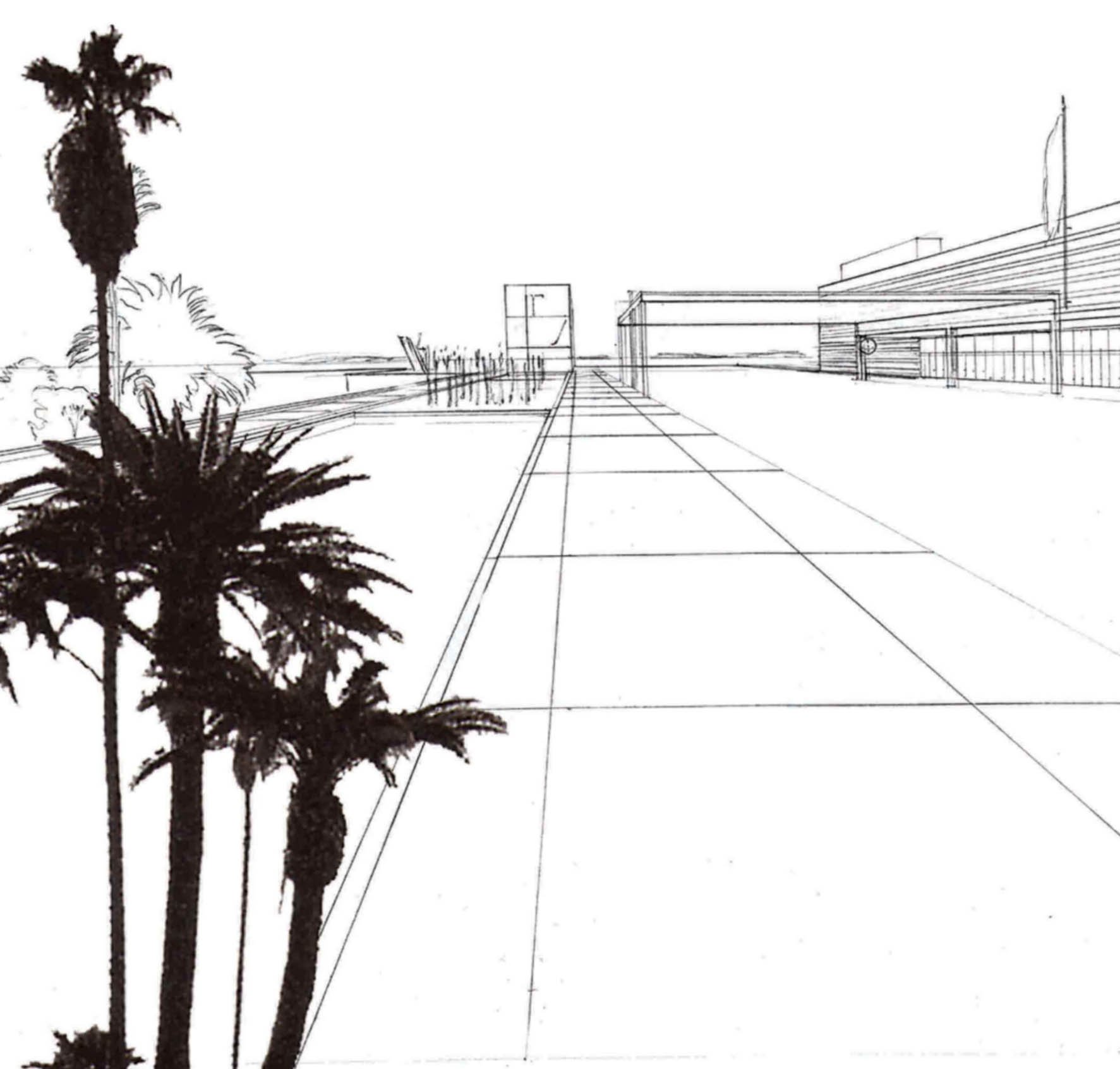
L’intervento ha come obiettivi l’ottimizzazione dei percorsi, il coinvolgimento delle attività commerciali, la rapidità di scambio intermodale, l’apertura del progetto al paesaggio. Stazione, rampa di accesso e parcheggi costituiscono un sistema di parti costruite nel verde, mentre la tipologia a ponte della stazione ricuce il tessuto urbano di Afragola e abbraccia visivamente il paesaggio circostante.
Lo spazio è pensato in unzione di accessi esclusivamente veicolari. Il percorso di avvicinamento rende percepibile l’intero organismo, a partire dal fronte est che, connotato dai collegamenti verticali in vetro a vista, costituisce la prima immagine della stazione. Porzioni archeologiche rinvenuto sono tenute alla luce e costituiscono, con il piazzale di accesso, uno dei tre livelli in cui si articola il progetto.
Gli altri due sono quello tecnico del piano dei binari e quello architettonico del ponte che li scavalca. I materiali del progetto e le essenze arboree sono ripresi dal contesto locale.
A project whose main goals are to obtain route optimization, involvement of retail outlets, fast intermodal exchange, and seamless merging with the landscape. The station, access ramp and car parks are a system of parts built in the middle of green spaces, while the bridge typology of the station melds with the urband context of Afragola and visibly embraces the sourrounding lanscape.
The station, access ramp and car parks are a system of part built in the middle of green space, while the bridge typology of the station melds with the urban context of Afragola and visibly embraces the sourrounding landscape. The space has been designed on the basis of vehicle accesses only. The entire building is visible as it is approached, starting from the east side which, with its vertical glass connecttions, is the first view of the station.
Archaelogical findings remain viewable and, together with the entrance square, are on of the three levels in the project. The two other levels are technical level of the railroad tracks and the architectural level of the bridge that crosses them. The materials used for the project and the trees are taken from the local sourroundings.
Autore/Author: Giovanni Di Domenico
Nasce nel 1943 a Villetta Barra, L’Aquila, e si laurea in architettura a Napoli nel 1970, città in cui lavora. E’ professore ordinario di progettazione architettonica e urbana presso la Facoltà di architettura della Seconda Università di Napoli; ha insegnato all’Università di Valanciennes in Francia nel 1991 e all’Università di Kagoshima in Giappone nel 1998 e 1999. Dal 1975 si occupa di progetti per centri culturali, case popolari, architetture museali, ristrutturazioni di isolati urbani.
Nel 2000 progetta, con Jo Coenen e Peter Trimp, il Piano per l’Oranje Nassau Stadpark e la ristrutturazione dell’area nord di Heerlen in Olanda. Attualmente sta eseguendo la ristrutturazione per la nuova sede del Rettorato della Seconda Università di Napoli. Suoi progetti sono pubblicati su riviste internazionali e guide di architettura moderna, ed esposti in Europa, Cuba e Brasile.
Born in Villetta Barra (L’Aquila) in 1943, he graduated with a degree in architecture from the University of Naples in 1970, where he continues to work. Currently a professor in architectural and urban design at the Faculty of Architecture at the Second University of Naples, he has lectured at the University of Valanciennes in France in 1991, and at the University of Kagoshima in Japan in 1998 and 1999.
Since 1975 he has worked on projects for cultural centers, low – costing housing, museum architecture, and the restructuring of urban blocks of houses. In 2000 he designed, in concert with Jo Coenen and Peter Trimp, the Plan for the Oranje Nassau Stadspark and the restructuring of the northern Heerland area in Holland. He is currently involved in the restructurin of the new premises for the Rectorate at the Second University of Naples. His projects have been published on international magazines, guides to modern architecture and exhibited in Europe, Cuba and Brazil.
